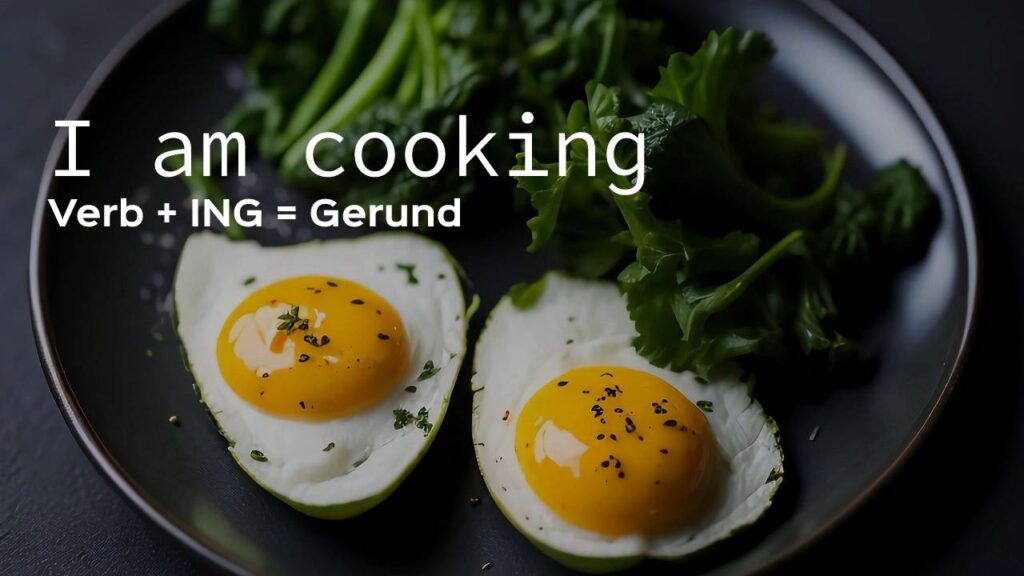What is a Gerund?
A gerund is a word that ends in “-ing” and acts like a noun.
Gerund Formula: Verb + ING = Gerund
- Swimming
- Running
- Reading
- Writing
- Singing
- Dancing
- Cooking
- Painting
- Traveling
- Learning

Go here for Gerunds
Go here for Gerunds and Infinitives
Spelling of Gerunds
Gerunds are formed by adding the suffix “-ing” to the base form of a verb. Here are a few general rules to keep in mind:
1. Add “-ing” to the base form:
go → going
eat → eating
read → reading
write → writing
2. Drop the “e” before adding “-ing”:
bake → baking
dance → dancing
hike → hiking
3. When a verb ends with a vowel between two consonants, RUNN double the last letter before adding “-ing.” RUNNing
sit → sitting
run → running
swim → swimming
4. Change the “ie” to “y” before adding “-ing”:
lie → lying
die → dying
5. Verbs that end in “ee” keep the “ee” and add “-ing”:
see → seeing
agree → agreeing
Welcome to The Present Progressive Tense
Please do the following exercise of spelling of gerunds
Has una prueba de spelling de Gerundios
Spelling of Gerunds
Este examen de spelling de gerunds evaluara tu capacidad de deletrear correctamente las formas verbales de los gerundios en inglés.
El examen, te proporcionará una serie de verbos en su forma base y te pedirá que escribas el gerundio correcto de cada verbo. La capacidad de deletrear correctamente los gerundios es importante para la comunicación efectiva en inglés, especialmente en la escritura.
- 1. Función – Vocabulary
- 2. Spelling – Gerunds
- 3. Dynamic – Stative Verbs
- 4. Affirmative Form
- 5. Negative Form
- 6. Interrogative Form
- 7. Information Question Form
- 8. Present Progressive in Reading Context
- 9. Present Progressive in Listening Context
- 10. Conversational Chunks
- 11. Listening Comprehension – Listening Oral Drills
- 12. Reading Comprehension
- 13. Writing Assignment
- 14. Speaking Assignments – Role Plays
- 15. Material and Extra Help


